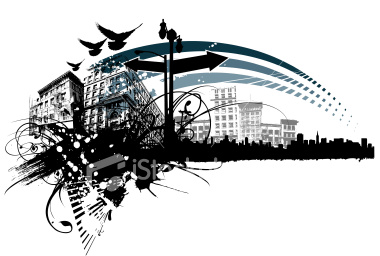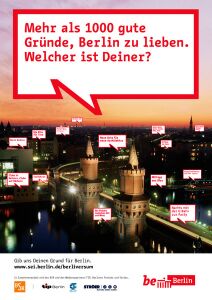Psychogeography 4.0
 Psychogeography , as a form of radical art, originated from the filing of the gaga postmodernists of the mid-1950s, and then adopted by later lovers of deep diving into their own head, often with the help of hallucinogens.
Psychogeography , as a form of radical art, originated from the filing of the gaga postmodernists of the mid-1950s, and then adopted by later lovers of deep diving into their own head, often with the help of hallucinogens.The essence of the chip is that behind every geographical object there is some kind of history, both personal and public. Each city is entangled with beliefs, myths, legends, events of historical and simply personal nature - each eatery, shop, bus stop, subway station are associated with someone's personal memories.
Participants in the psycho-geographic movement sought to make this emotional part of the urban landscape explicit. Turn the streets into public media and ultimately the "mouthpiece of the revolution."
')
The advent of the Internet and mobile telephony made it possible to turn psychogeography into interactive and mass entertainment. In 2004, the project appears Yellow Arrow , and then the project Grafedia . Both are designed to allow people to "mark" urban objects. If a person decides to share with the society his perception of an object, he uploads his message to the site in audio or text format and receives a special tag, which should be placed near the relevant place.
 A mobile tag is a code that allows access to the attached data - in this case, you need to send it in SMS format to a specific number. In response, an attached message is automatically sent - text, photo or audio file.
A mobile tag is a code that allows access to the attached data - in this case, you need to send it in SMS format to a specific number. In response, an attached message is automatically sent - text, photo or audio file.Psychogeographical projects attracted the attention of the advanced public and the media, and the Google Maps API helped turn the data into a cognitive spectacle.
Psycho-geo-tags are still entertainment for geeks, but the technology confidently drags them to the mass consumer. Especially thanks to two-dimensional bar codes and mobile cameras.

The psychogeoproject Dencity.net, as well as the Semapedia project, which allows you to place mobile tags with attached articles from Wikipedia, use bar codes of the QR-Code standard as mobile tags.
 When the Berlin municipality organized a powerful psychogear in their city, two-dimensional bar codes appeared on advertising monitors in the Berlin metro with a link to the event’s mobile website. On the site, each visitor can choose one of the urban sites and leave their impressions.
When the Berlin municipality organized a powerful psychogear in their city, two-dimensional bar codes appeared on advertising monitors in the Berlin metro with a link to the event’s mobile website. On the site, each visitor can choose one of the urban sites and leave their impressions.To read a two-dimensional bar code, you need to install a reader program on your phone. There are various readers and for each model of phone not everyone can approach.
For example, on LiveCode.ru there is a special form, which, depending on the phone model, automatically selects the necessary reader. You can also create your mobile tag by attaching a photo, text or just an Internet link to it.
Whether the fashion for psychogeography takes root in our latitudes will be shown by time.
Source: https://habr.com/ru/post/44404/
All Articles